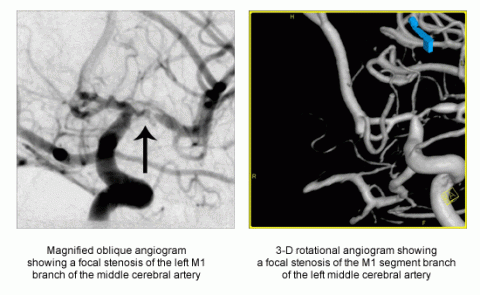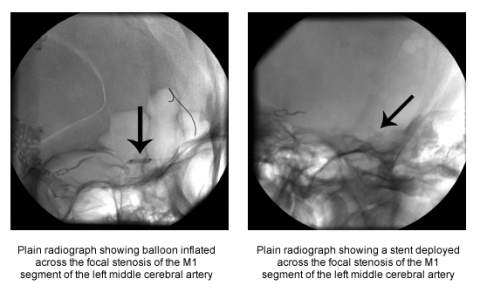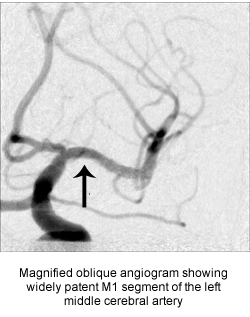Introduction
Intracranial atherosclerosis is the build up of a sticky substance called plaque in the arteries that supply the brain with blood, causing the narrowing and blockage of these vessels. It is part of the same systemic process that affects the heart or legs causing a heart attack or pain while walking. If a vessel becomes completely blocked or severely narrowed, blood flow to the brain can be compromised and a stroke can occur
Risk Factors
The risk factors associated with intracranial atherosclerotic disease are the same for atherosclerotic disease elsewhere in the body such as in the vessels of the heart, causing a heart attack. Certain risk factors can increase your risk of carotid artery disease. Some of these risk factors cannot be changed while others can be modified or treated.
Risk factors that cannot be changed:
- Increasing age
- Gender
- Family history of stroke
- Relative with atherosclerosis
- Prior history of stroke and/or heart attack
- Race
Risk factors that can be modified or treated:
- High blood pressure
- Smoking
- Diabetes
- Heart disease (e.g. heart attack, heart failure)
- Artery disease outside the heart and the major vessels
- Obesity
- High blood cholesterol level
- Lack of exercise
Symptoms
Unfortunately, unlike atherosclerosis of the carotid arteries, which often causes transient ischemic attacks (TIA or ministrokes), intracranial atherosclerosis often is only found when a major stroke occurs. Common signs and symptoms of a stroke or TIA may include sudden:
- Numbness or weakness of the face, arm or leg especially on one side
- Confusion or dizziness
- Trouble speaking or understanding
- Trouble seeing in one or both eyes
- Trouble walking, loss of balance or coordination
- Severe headache with no known cause
- Trouble swallowing
The patient may also experience sudden loss of consciousness and seizures.
If you or anyone you know experiences these symptoms, emergency medical care should be sought. It is imperative for the patient to reach the hospital as quickly as possible for certain types of treatments to be successful.
Treatment
Treatment options for atherosclerotic carotid artery disease include intracranial stent placement, medications, and surgery.
Intracranial Stent Placement and Angioplasty
Intracranial stent placement is an endovascular procedure done from the inside of the blood vessel. A small puncture is made in the femoral artery in your groin area under local anesthesia. A guiding catheter is advanced under x-ray guidance into the internal carotid artery. A small caliber wire is then negotiated under x-ray guidance past the area of narrowing. A stent is then positioned across the narrowed area in the artery within the brain. The stent is released and then dilated with an angioplasty balloon. The stent stays in place permanently holding the artery open and improving blood flow. The stent also holds the plaque against the artery wall. This reduces the risk of plaque breaking off, traveling to your brain, and causing a stroke. Most stents are made from nickel-titanium, a metal that is bendable but springs back into its original shape after being bent. A vascular closure device may be used to close the small incision in your groin or pressure applied to the puncture site until bleeding stops.
Medications
Your doctor may prescribe antiplatelet or anticoagulant medications. Common drugs used include aspirin, Plavix, warfarin, Aggrenox, or Ticlid. These drugs lower the risk of clot formation. However, some studies have concluded that these medications have not prevented strokes from occurring. Your doctor may also prescribe medications to lower your blood pressure or cholesterol. He or she may recommend ways to control your risk factors, such as quitting smoking, exercising and losing weight.
ECA/MCA Bypass Surgery
ECA/MCA bypass is a surgical procedure in which the superficial temporal artery over the skull is attached to a branch of the middle cerebral artery to increase blood flow to the brain. This is useful in certain select patients to prevent a stroke from occurring.




